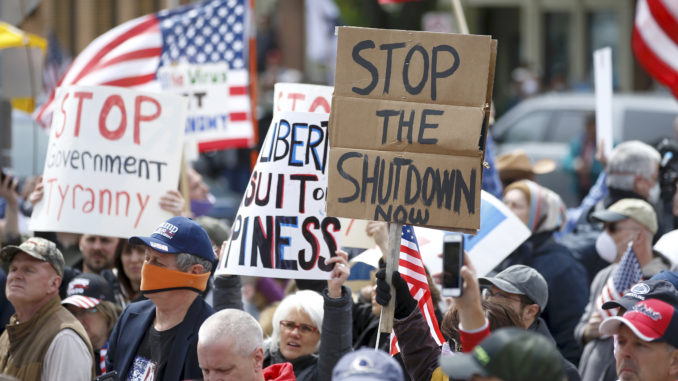
By MICHAEL RUBINKAM
Associated Press
Some regions of Pennsylvania are tantalizingly close to escaping some pandemic restrictions. Other parts of the state could have a long way to go before residents and businesses begin getting back to normal.
As the administration of Gov. Tom Wolf considers when to allow residents to leave their homes and shuttered businesses to reopen, an analysis by The Associated Press shows how the state’s sprawling geography and highly variable population density are playing a big role in the shutdown calculus.
Wolf says a swath of rural northern Pennsylvania — spanning some 230 miles from east to west — is set to begin moving out from under his shutdown orders May 8. That is partly based on a metric in the state’s reopening plan that says new infections of the coronavirus must total no more than 50 for every 100,000 residents over a two-week period.
It’s a different story in densely populated eastern Pennsylvania.
In the southeast, which includes Philadelphia and its tightly packed suburbs, residents are still contracting the virus at a rate nearly five times above the state’s threshold to be considered for shutdown relief. And the northeast region, which includes Allentown, Scranton and Wilkes-Barre, is still four times over the state threshold.
Wolf’s gradual, color-coded reopening plan divides Pennsylvania’s 67 counties into six geographic regions. All of Pennsylvania has been at “red,” meaning all 12.8 million residents are under orders to stay home and all businesses deemed “non-life-sustaining” are closed to help contain the virus, which has infected more than 38,000 people and killed more than 1,400 statewide.
To read the rest of this story, please see a copy of Saturday’s Mon Valley Independent, call 724-314-0035 to subscribe or subscribe to our online edition at https://e.monvalleyindependent.com.


